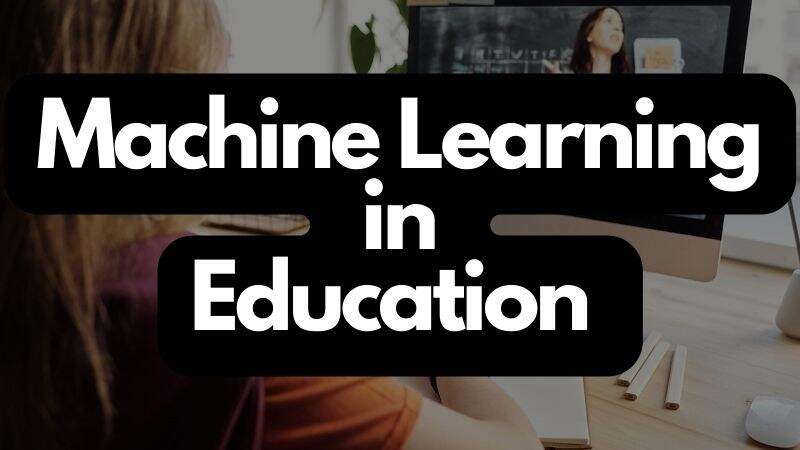The integration of technology into the education sector has made a prominent place in contemporary times. Technologies such as AI, blockchain, and machine learning have emerged and revolutionalize the education system. Also, these technologies are flourishing due to their ability to revolutionize the education system.
Leveraging technology for education is quite beneficial for both teachers and students. This is because technology tends to enhance the learning process for the students and provide much-needed assistance to the teachers.
Machine learning is one such technology that can turn out to be an essential part of the educational sector. Machine learning has the potential to expand and so is the case with the education sector if it is implemented with it.
To substantiate this, Globe news wire reveals that the market size of machine learning is $21.17 Billion in 2022. Also, it is expected to attain a valuation of $ 209.91 billion by 2029 at a CAGR of 38.8%.
However, the various benefits of using machine learning in the education sector are yet to be acknowledged by teachers. Considering this, it becomes quite necessary to lay great emphasis on machine learning and incorporate it into the education system.
Fortunately, we have covered a detailed outline that demonstrates why its a good idea to utilize machine learning in the education section.
5 Reasons Why Machine Learning is Essential in the Education Sector
1. Keeps a Track of Student Performance
Keeping a track of students’ progress is of utmost importance for teachers to know how well they are performing. This can very well be done through software powered by machine learning as it can assist teachers to store and analyze students’ performance effectively.
For instance, if teachers want to improve students’ performance for an upcoming examination, ML-powered software can be of great help. This software can provide a detailed report of students’ grades in the previous examinations and would highlight students with low grades. After that, teachers can put forward effective strategies to help those students so that they can perform better in future examinations.
2. Personalizes the Learning Process
Each student has different learning abilities and thus each student would learn new things at their own pace. This makes it important for teachers to modify their teaching styles and methods to cater to individual learning needs.
However, it can be quite challenging for teachers to consider the different learning needs of their students at once. This can hamper the learning environment within the classroom.
Taking this into consideration, incorporating machine learning into the classroom will serve the right purpose. The best part about this technology is that it can help teachers to modify their teaching styles as per the student’s capabilities.
For instance, if a student is struggling with math concepts, then machine learning software will identify the learning gaps with the help of deep learning and analysis. Once the gaps are identified, the system can help students to relate the topic to the real world. This way, their learning gaps can be bridged effectively which will enhance their knowledge base.
3. Enhances Efficiency
Automation across various fields helps to make various operations more efficient. The same is the case with the education sector. With the implementation of machine learning, teachers can focus more on important and high-priority tasks. This is mainly because they can automate their routine tasks with the help of machine learning.
As a result, all the routine tasks for teachers such as classroom management, attendance report management, student performance evaluation, etc. can be automated by machine learning software.
Therefore, machine learning has provided much-needed assistance to teachers which has made them more efficient than before.
4. Creates a Feedback Mechanism
Providing feedback to the students is of great importance so that they can improve their academic performance. Also, it is the responsibility of teachers to share feedback in a timely manner.
Providing feedback to students will help them to identify their strengths and weaknesses. This way, the students would work more on their weaknesses and perform better in the future.
However, for teachers, it can be quite tough to give feedback to each student as it is time-consuming for them. To counter this situation, machine learning software can act as an effective feedback tool.
With deep analysis and interpretation of students’ performance data, machine learning software can review how well they are performing. After analyzing student performance, these software would generate a detailed report to highlight their strong and weak areas. This report can act as a great feedback mechanism for students to help them identify and overcome their weaknesses and perform better.
5. Better Content Creation
Machine learning software can help teachers to create lesson content. Now, the interesting thing over here is that this software-generated content has visual graphics in it.
This can help students to have a much better understanding of a topic as visual graphics are much more effective than normal content. Moreover, students tend to enjoy learning through visual content that keeps them engaged in the classroom for a longer time.
Conclusion
To encapsulate, the integration of machine learning into the education system would make its way in the coming future. The above-mentioned are some of the statements that favor the integration of machine learning and education. This can bring fruitful results as students would get a much better learning experience and the efficiency of teachers would increase.

Jessica loves to write interesting and knowledgeable blogs regarding business management, education and life to satiate the curiosity of her lovely readers. Currently, she is serving as a content manager at the ‘Speaking Polymath’. Every piece of content that she writes demonstrates her immense love and passion for her profession.

